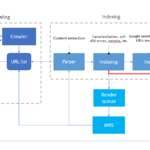Handling Elemental Impurities Risk Assessments in Pharmaceuticals
By :Dr. Dhriti Tupe, GxP Expert ®
A Comprehensive Guide Elemental impurities in pharmaceuticals can be harmful to patients. Regulatory agencies have set guidelines to manage these risks through proper assessments. In this blog, we’ll explore the essentials of elemental impurities risk assessments, including key considerations, best practices, and tools to ensure compliance.
Understanding Elemental Impurities
Elemental impurities are unwanted substances that can contaminate pharmaceutical products during manufacturing, packaging, or storage. These impurities can arise from various sources, including raw materials, equipment, and environmental factors.
Regulatory Requirements
Regulatory agencies, such as the US FDA and EMA, have established guidelines to manage elemental impurities in pharmaceuticals. These guidelines emphasize the need for risk assessments to identify, evaluate, and mitigate potential risks.
Risk Assessment Process
A thorough risk assessment involves the following steps:
- Identification: Identify potential sources of elemental impurities in the pharmaceutical product.
- Evaluation: Assess the likelihood and potential impact of each identified impurity.
- Mitigation: Implement controls to minimize or eliminate identified risks.
- Monitoring: Regularly monitor the effectiveness of implemented controls.
Best Practices
To ensure effective risk assessments, consider the following best practices:
- Collaboration: Involve cross-functional teams, including quality, manufacturing, and regulatory experts.
- Data-driven approach: Utilise historical data, literature, and industry benchmarks to inform risk assessments.
- Risk prioritisation: Focus on high-risk impurities and implement targeted controls.
- Continuous monitoring: Regularly review and update risk assessments to reflect changes in manufacturing processes or raw materials.
Tools and Resources
Several tools and resources are available to support elemental impurities risk assessments, including:
- ICH Q3D Guideline: Provides guidance on elemental impurities risk assessments.
- USP Chapters: Offers standards and methods for elemental impurities testing.
- Risk assessment templates: Streamline the risk assessment process with standardized templates.
Conclusion
Elemental impurities risk assessments are critical to ensuring the safety of pharmaceutical products. By understanding regulatory requirements, following a structured risk assessment process, and adopting best practices, pharmaceutical manufacturers can effectively manage elemental impurities risks. Stay vigilant, stay compliant, and prioritize patient safety.
Written By :
Dr. Dhriti Tupe, GxP Expert ®
🔸Quality Compliance Lead🔸Mentor🏆🔸Ph.D.🥇🔸 MBA🔸LLS- MB, GB, BB🔸LSS-Minitab🔸LSS Expert-Harvard Publishing Case Studies🔸LLS-Healthcare🔸CQA and IRCA Certified ISO 9001:2015 Lead Auditor🔸GxP Consulting Adviser
Pfizer









